I recently took a trip to Seoul, where I visited one of the most important historical sites in Korea. Gyungbok-gung (경복궁) is an enormous royal palace complex that was built in the late 14th century. It now sits near the center of modern-day Seoul.
I visited Gyungbok Palace with a Korean friend. We traveled by subway to the Kyungbok Palace subway station. I was surprised to find that the station literally sits beneath the palace. The subway station exit takes you directly to the main gate and ticketing area.
The first thing I noticed after we purchased tickets and went inside was how crowded the palace was. Although the complex covered hundreds of acres and included several different areas, it seemed like every doorway just led to a bigger crowd.
We spent over three hours wandering the palace grounds, and I took over 70 pictures, so it’s not possible to explain everything. Instead, I’ll show you my favorite place and then include a slideshow at the end.
The palace was not what I expected. When people told me about Gyungbok Palace, it conjured an image of a European-style castle with high walls and a few tall buildings. This expectation didn’t take into account the fact that Korea was, prior to the 1980’s, a poor agrarian society. Koreans may enjoy a spot near the top of the food chain today, but they spent 99% of their history scraping by. So, although the palace was beautiful and steeped in history, it was nothing like I expected.
As we wandered through the palace complex, we saw every type of building. Temples, royal houses, ceremonial rooms and more. Once the tour finished, I realized that my favorite place was the very first building – the throne room near the main gate.
The building and its surrounding stone courtyard were the most important ceremonial places in the palace. This is where kings first greeted guests and where the military leadership gathered to be addressed by royals.
As we stood in the courtyard I was struck by two distinct feelings. The first was that the courtyard was not as big as I expected. Pictures and movies made the courtyard seem gigantic. But I’m confident that it couldn’t accommodate more than a couple thousand people. Secondly, I felt like I’d stepped back in time. Other parts of the palace, most of which were rebuilt recently, didn’t feel as authentic as this place. I could actually picture men in colorful uniforms standing in their respective places, waiting for the king to emerge.
The center of the courtyard, directly in front of the throne room, was lined with small stone pylons. Each stood about two feet tall and they were all engraved with Chinese characters.
The engravings on the stones indicated the rank of the people who should stand in that area. On the left side were military rankings and on the right side were civilian rankings (jobs were ranked by importance). The higher ranks stood closer to the throne and lower ranks father away. The stone pictured above marks the area in which low ranking military officers stood (people equivalent to modern-day Lieutenants).
There were plenty of other beautiful spots along the way as we wandered through the palace. Enjoy the slideshow!
Until next time.
-Taft
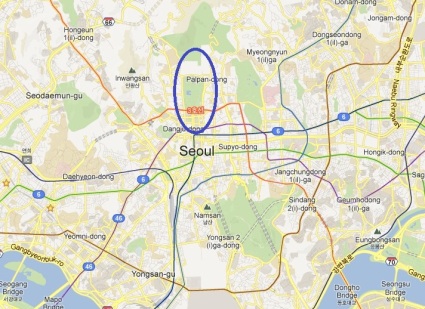
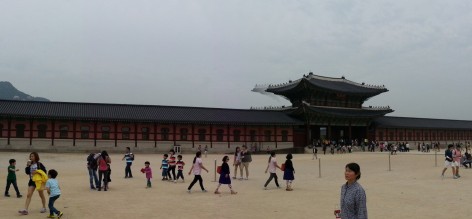
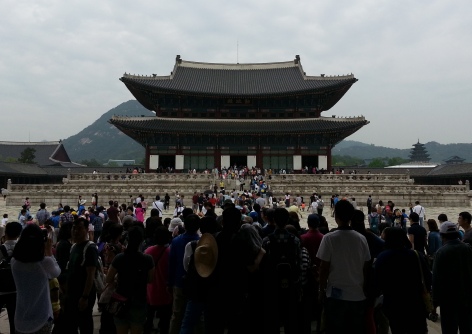
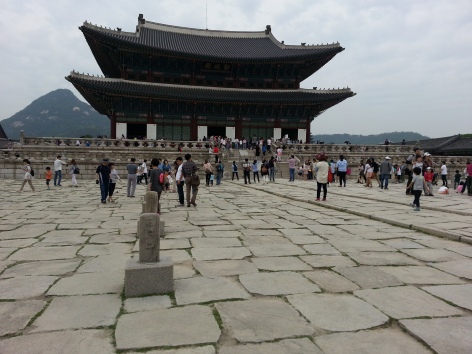
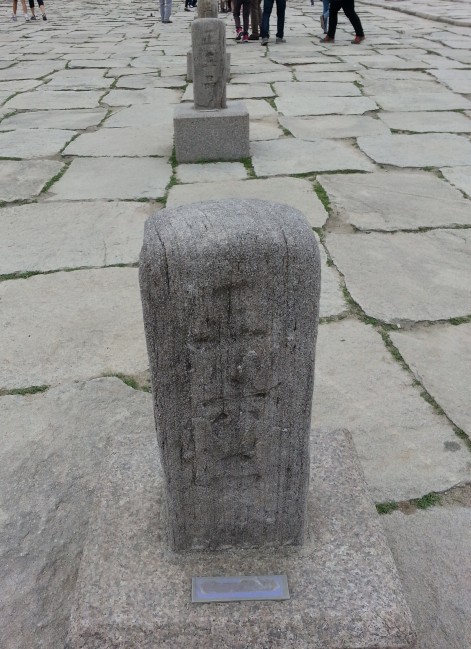
Looks pretty impressive.
Yeah it was a pretty cool place. I’d like to go back and really explore when it isn’t slam-packed with tourists.